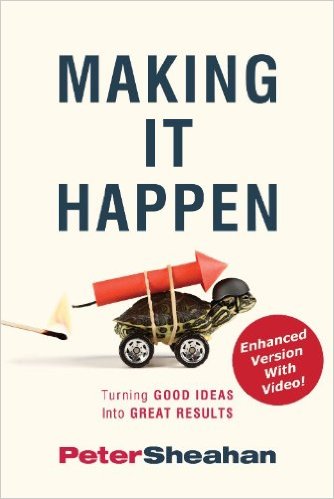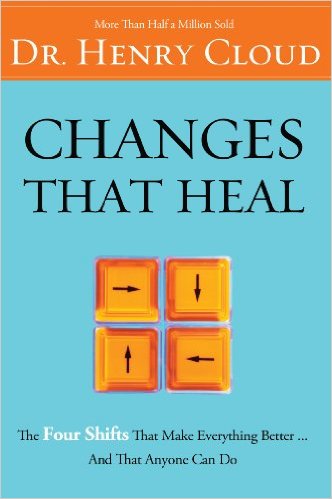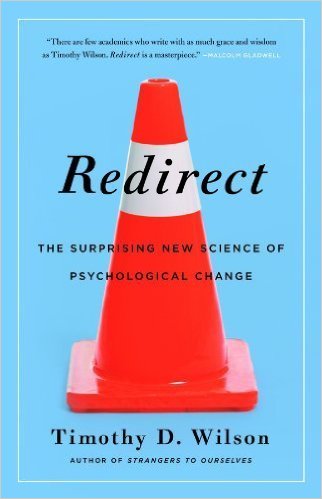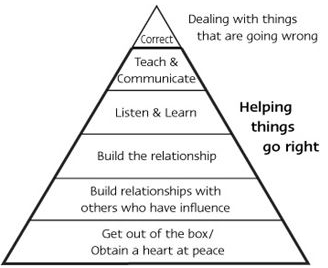Book Review-Uncharitable: How Restraints on Nonprofits Undermine Their Potential
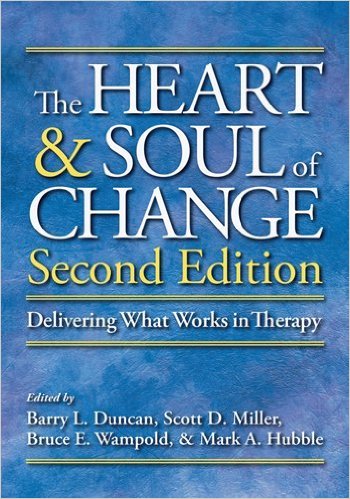
Book Review-The Heart and Soul of Change: Delivering What Works in Therapy
I’ll be the first to admit that my reading list isn’t always the most mainstream. I can’t tell you how few people would find a book on effectiveness in psychotherapy interesting – but I know that it’s possible I’m in the minority here. However, I’ve been to a few counselors over the years. I’ve read more than my fair share of “self-help” books on psychology over the years and I began to become intrigued by the differences between different approaches and what different practitioners – whether authors or counselors – thought worked.
In The Heart and Soul of Change there’s the answer to how many psychologists does it take to change a lightbulb. The answer is one. However, the lightbulb has to really want to change. As I read the chapters I began to form a picture in my mind about how therapy actually worked and how the process being followed isn’t the key – it’s the belief that things can change and will get better.
Placebo
One of the most interesting challenges in the research about what is and what isn’t effective therapy is the impact of the placebo effect. That is, how do you provide a service to someone that isn’t therapeutic? That’s pretty hard when you don’t know what is – and isn’t therapeutic. At some level just being heard can have some benefits so creating an environment that has no measurable impact is hard.
Harder still is the idea of a double-blind study. That is that neither the doctor (in this case therapist) nor the patient know whether the drug that they’re getting is active or simply a placebo. The therapist has to understand the course of treatment and anyone with professional certification will surely know if the treatment plan won’t produce effects.
While in medicine it’s called a placebo and the placebo effect, what’s really happening? The answer is hope. Quite simply, the most effective predictor of whether there will be progress made or not is the hope that there will be some change.
Hope
Hope is an amazing thing. It’s more resilient than any emotion known to man. You can push a man down. You can beat him up. As long as he’s got hope, he’ll be alright. Pandora’s Box is the mythical Greek story of Pandora who opened a box (or more accurately, a jar) containing all the evils of the world – and hope. Though hope was beaten down – lying on the bottom of the container – hope survived.
Hope is powerful stuff. In my own life the times when I’ve felt the worst is when I felt things were hopeless. I’m a relatively future focused guy (see The Time Paradox) and I firmly believe that having a growth mindset is essential. (See Mindset) I believe that hope is a mental wonder drug for a variety of maladies.
Are You Alright?
While we often ask “Are you alright?” we often are not interested in the answer. We don’t care about the other person, really. However, there are sometimes diseases and conditions which are met with scorn. Alcoholism, for instance, has a stigma associated with it that people believe if you are an alcoholic that you’re somehow a lesser person. For the most part, people have let go of this stigma when it comes to professional counseling, however, it’s not completely gone.
Still other factors, like cost are important. However, as barriers go, immediately after the factor of cost is the doubts of efficacy. In other words most people don’t believe that they can make things better by simply talking with a counselor. Perhaps this is because of a fixed mindset (See Mindset) but it could equally be that people know others who have tried counseling and it hasn’t made them any better. There is one mental health provider for every 350 people.
Choose Wisely
One of the interesting insights from the book is that the variability between therapists is larger than all of the other variability. That is more than any single factor the quality of the therapist that you choose will determine the outcome. The problem with this is that it’s nearly impossible for you to be able to determine a good therapist from a not-so-good therapist on the outside.
There are recommendations for standardized reporting and assessment of treatments but they’re so infrequently used that even if a centralized database were collected it wouldn’t be statistically valid.
So unfortunately the biggest impact on treatment outcome is a hard one for a consumer to control. Similarly, therapists are given a set of conditions that encourage better outcomes but no specific plan as to how they can become a better therapist. While there are some things that can be done (see the following sections) these don’t guarantee that the therapist will become better – it only makes the chances of positive outcomes more likely.
Set Clear Goals
One of the best things that you can do to improve outcomes in therapy is to decide on what you really want. That sounds really simple – and it is. However, it’s one of the keys to effective therapy – and in life. As Lewis Carol wrote “If you don’t know where you are going, any road will take you there.” Setting clear goals will help in nearly any aspect of our lives so it’s not surprising it helps with therapy.
Alliance
It’s powerful to feel like there’s someone who is on your side. Everyone wants someone who is in your corner. When it comes to therapy, the compatibility of the therapist’s behaviors and the client’s desires leads to a sense that the therapist is on the side of the client – or not. The research data says that the more effective the therapist is at helping build an alliance with the client, the better the results will be.
Therapist alliance is one of the most important factors considered – substantially more important than the chosen treatment. When you realize that nearly half of people who begin therapy never complete it, it is little wonder why alliance is so important.
Pain of Changing and the Pain of Staying the Same
When people enter therapy they presumably do so because there is some level of pain in their life. Perhaps their marriage isn’t fulfilling their needs. Perhaps they’re stuck in a dead end job. Maybe they’re dealing with a sense of guilt or shame from the way that they were raised. Rarely does someone walk into a therapy office saying “I feel great, but I want to feel even better.”
However, making any kind of a change has a cost and the cost of making a personal change is often times pain. Often it’s the pain of changing that keeps people stuck in their bad situations. The pain – or the fear of pain – prevents people from breaking out of the cycle that they’re in.
Pain is sometimes a difficult (or crucial) conversation. (See Crucial Conversations) Pain is sometimes rewiring old bad habits.
Rules and Guidelines
One of the questions that comes up is whether there are a rigid set of rules that must be adhered to in therapy or in a specific therapy. Or conversely, is too much adherence to a rigid set of rules detrimental. The answer seems to be mixed. It seems that in some cases the rules are an important part of getting good outcomes in therapy and in others the opposite is true that the rules become too restrictive and they make it harder to be successful.
A rule is a specific statement of what can and cannot be done. It provides a clear delineation between complying and disobeying. This is great when the ultimate goal is arbitrary. Consider for a moment the idea of someone who eats too much. The rule may be that they need to eat what’s on their meal plan for the day – and only their meal plan. That’s a rule.
In the case of someone who struggles with eating disorders this might be an appropriate rule. However, ultimately as time goes on and there’s a greater understanding and appreciation for things it makes sense to shift to guidelines. Consider the guideline that you should be on a 2,000 calorie diet. If you’re under one day and over the next it’s OK. However, if you’re over for several days in a row – particularly if you’re significantly over – the guideline breaks down.
So rules are good when you can’t put together the thinking processes that will support long term good behavior. Yes, they’re restrictive but they may be useful for a time. This is particularly helpful with addicts. Is it true that every alcoholic will lose themselves to their addition if they take one drink? Probably not, however, if you don’t set the standard at one drink where do you set the standard?
Longer term in most cases a guideline that can be processed by the client seems to be a better answer. In some situations, like the alcoholic above, it may be that it has to be a rule and never get converted to a guideline – but that’s not the rule – it’s the exception.
The more you can help folks climb from apprentice to journeyman to mastery of a space the more you can move to guidelines instead of rules. You can look at my post titled Apprentice, Journeyman, Master for more information.
Client Resources and Discoveries
Have you ever had a friend come up to you and thank you for advice that you never gave them? They earnestly believe that you told them to pursue a relationship, a job, or a hobby that you don’t remember recommending to them? If so you’ve experienced what can happen when you’re listening to other people. They form their own opinions of what you’re saying – whether you say it or not.
Sometimes you share some part of an idea but they combine it with something else they knew, another idea, or something else and they come up with something totally different than your original intent but yet they still attribute the idea back to you.
The research seems to show that clients are more successful when they’re relying on their own resources to get better. They utilize the things that they’ve been taught and don’t depend upon the therapist to solve their problems but instead find ways to solve their own problems with the information and tools that they have. There’s no escaping the fact that it’s the client that has to do the work.
Quick Fixes
Pseudo-science sells. Everyone wants the weight loss pill that will solve their weight management problems. They crave the easy solution to quit smoking. They long for an easy way for their marriage to be better. The fact of the matter is that we want is the quick and easy. In many cases healing our thinking is a lasting change– but it is not always quick. Consider that 32% of the medical studies in highly regarded journals didn’t hold up to later studies. There’s concern that published research findings might easily be proven false.
If you can get any supposed expert to say something positive for the price of a consulting fee, how can you trust that what you’re reading is real?
Talking and Taking
Psychotherapies are as effective as drugs – though the efficacy may be quicker with drugs. However, the effects of psychotherapy continues on after the therapy ends where with psychotropic medications the drugs must be continued to continue to receive the effects. We’re facing an epidemic of prescribed drugs without therapy. We’ve become a world consumed by people who are expecting some magic pill to be the quick fix they want – without the pain of having to confront the real issues and address them.
The High Cost of Mental Health
Mental health workers are making less and less. However, the cost in the mental health system isn’t the cost of mental health. The cost of mental health in our society is the impact it has on our health care system. As mentioned in Change or Die 80% of our medical expenses are spent addressing what are effectively behavioral – or mental health problems. Add to that the fact that mental health disorders rank first among causes of disability in the United States and Western Europe.
The cost of our inability to manage our mental health is quite literally our physical health and our ability to contribute to the society.
Play it Again Sam
Rounding out the coverage in the book is that paraprofessionals (think life coaches, bartenders, hair stylists, etc.) may do as well as professionals. That’s actually interesting since I’m not likely to ever pursue a career as a licensed counselor. However, I might entertain a life coaching certification if the conditions are right.
The research has shown that consumers have grown weary of services that treat mental illnesses and substance abuse as lifelong conditions. While I believe that there is a dramatic amount of improvements that can be made quickly, I’d personally recommend periodic check-ins. However, this weariness may lead folks who have traditionally chosen counseling to consider options like coaching and other alternative ways of getting help.
Finally, research shows that by the time a client is ready to tell you that there’s a problem, they’ve already decided that it’s time to leave. So for a group of insightful people perhaps it’s a good idea to listen more carefully to the clients. Of course, a good starting point is reading what does and doesn’t work in therapy and that is The Heart and Soul of Change.

